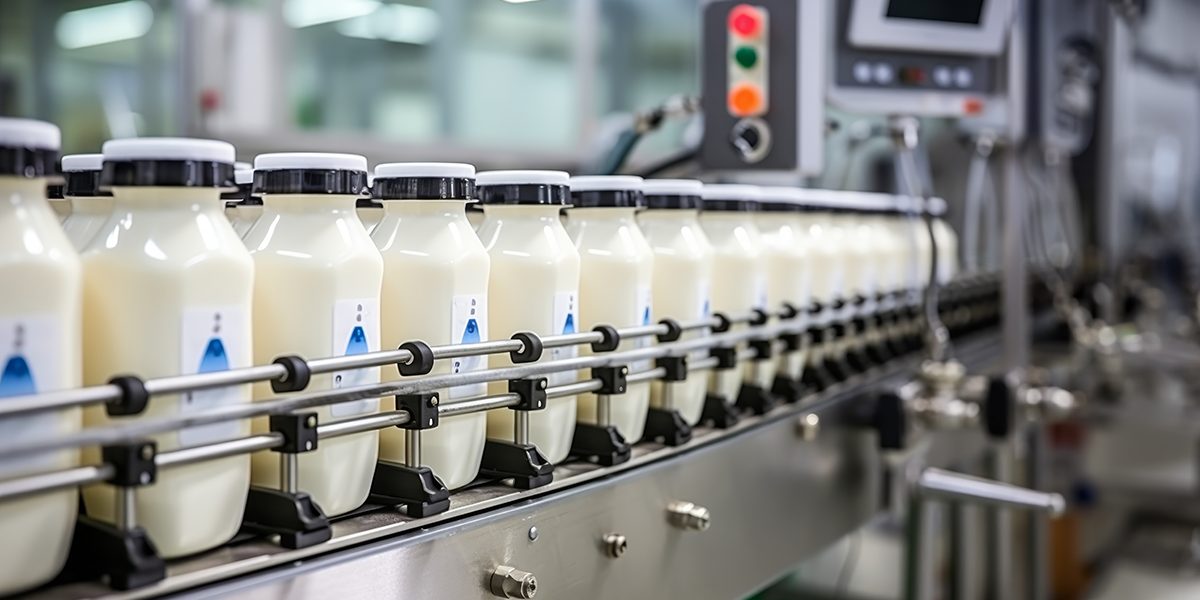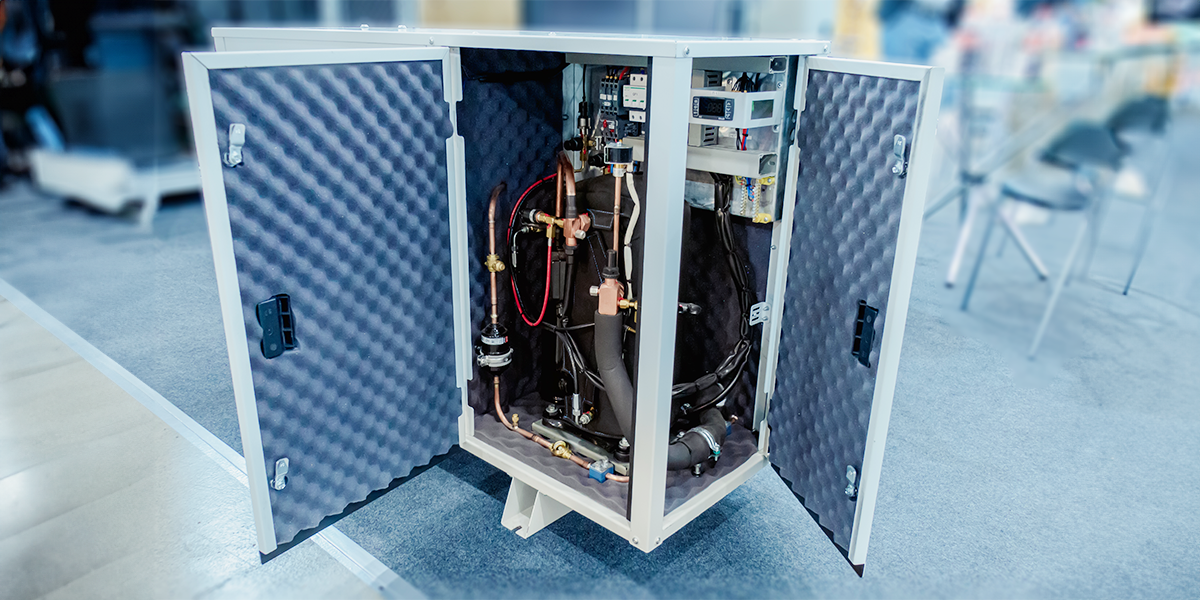A Guide to Low-Maintenance Microfluidic Pumps
Key Takeaways: Fluid Metering’s low-maintenance microfluidic pumps for lab automation deliver long-term precision with minimal wear, thanks to a...

The food and beverage industry is teeming with microfluidics applications. From testing and quality assurance to production and packaging, the science of controlling fluids at the microscale has helped many food and beverage companies mass produce quality products with consistent accuracy. Let’s get a taste of how microfluidic pumps are prepping the pièce de résistance of better food and drink options.
Enhancing Food Safety
Pathogen Detection
Microfluidic pumps play a critical role in rapid pathogen detection. By dispensing specific assays, antibodies, or DNA probes within analyzers, these devices can help identify harmful bacteria (such as Salmonella or E. coli), viruses, and other contaminants in food and beverage samples. This is especially important in foods that spoil easily, like dairy products.
Toxin Screening
Inside of liquid chromatography and mass spectrometry machines, microfluidic pumps also aid in detecting toxins, like mycotoxins and pesticides, within beverage and food matrices by transferring liquid to the detection mechanisms. These toxins can adversely affect human health, so early detection is crucial for preventing dangerous illnesses and widespread outbreaks.
Allergen Presence
Some OEMs incorporate microfluidic pumps to deliver reagents and enzymes that check for gluten, dairy, soy, corn, histamines and other common allergens.
Safety Regulations
Government organizations like the FDA and USDA have strict requirements for chemical and pesticide levels in food and beverage products. Microfluidic pumps within OEMs can help to ensure compliance with current safety regulations by precisely passing media through to instruments that detect the presence and concentration of regulated substances and chemical compounds (i.e., antibiotics in dairy products).
Testing Costs
Usually, running macroscale safety and quality assurance tests on foods and beverages is time consuming and costly, requiring many repetitions and samples that are ultimately disposed of. Microfluidic pumps reduce these indigestion-inducing headaches by using more precise volumes to monitor food properties and contaminants. This reduces surplus waste and saves smorgasbords of time and money.
Quality Control & Stability
Consistency
Microfluidic systems allow precise fluid and gas control at the microscale (and nanoscale if using Fluid Metering's TRYTON™). This allows them to add ingredients with consistency for homogenous results. Their uniform particle dispersion encourages suspension which helps prevent particles from settling or forming unevenly mixed clumps.
Texture
The incorporation of microfluidic pumps into OEMs allows for the creation of novel food structures with controlled consistencies and textures such as gels, foams, and emulsions to enhance the consumer’s sensory experience:
Gels - controlled gelation for creamy desserts and fruit gels
Foams - air injection for light and airy textures in mousses and whipped cream
Emulsions - precise oil-water balance for smooth condiments like salad dressings and mayonnaise
Density - precise dispensing of liquid into a density meter for wine and other alcoholic beverages to ensure their concentrations (i.e., alcohol content) and consistencies are up to par with desired levels
Flavor Delivery
The controlled release of encapsulated ingredients and flavor compounds, such as encapsulated vanilla or citrus oils, enhances the taste experience. Similar to flavoring and xylitol beads found in certain brands of chewing gum that are released as the consumer chews, controlled doses of these microcapsules improve the consistency of flavor throughout the beverage or food matrix.
Nutrient Delivery
Akin to flavoring delivery, nutrients can also be delivered via microcapsules. Precise encapsulation of bioactive compounds, like essential oils and vitamins with nano-sized particles, ensures controlled nutrient release. Encapsulated vitamins, probiotics, and vital nutrients remain stable during storage, so they can be successfully delivered to the consumers.
Stability
Certain foods have a short shelf life or don’t perform in the functionally desired way. By dosing different structures into food, its viscosity can be altered. For example, using a rheometer to measure cheese viscosity, as well as heating cheese to see what temperature it melts at, can help determine if the amount of additives or stabilizers added during production was correct.
Packaging
Bottling, canning, and other types of packaging are critical to ensuring production efforts and results don’t go to waste. Accurate dosing and spraying seal the safety and quality lids during this final stage of the food/beverage journey.
Final flavors and scents are added into certain packaged goods just before they are sealed. For example, coffee scent is sprayed into bags of coffee beans before they are sealed to make them more enticing. (This pleasing aroma would not otherwise be released until the beans are brewed.) Likewise, many bottled and canned drinks, such as wine, contain liquid dosed nitrogen to slow oxidation, prevent premature aging, and preserve taste.
Future Prospects
Personalized Nutrition
In the future, microfluidics could aid in tailoring nutrient delivery based on individual needs and preferences. Imagine personalized protein shakes, smoothies, or vitamin supplements! Based on consumer health, researchers could use analyzers to find trends where populations or individuals lack certain nutrients and work to increase them. They could even find unhealthy contents and work toward limiting them.
Scaling Food Processing
Researchers, food scientists, and engineers are constantly cooking up new ways to push the boundaries of microfluidics in the food and beverage industry. While scaling food processing lines remains a challenge to some, Fluid Metering pumps help maintain throughput and consistency while aiding in regulatory compliance the whole way through. Our compatible technology and software can easily integrate with many existing forms of equipment.
Serving Up the Best Solutions
Fluid Metering’s engineer-to-engineer support team will help you find the perfect pump recipe for your food and beverage project. Contact us today to unlock fresh new ways of improving food safety, quality, and packaging within your production line.

Key Takeaways: Fluid Metering’s low-maintenance microfluidic pumps for lab automation deliver long-term precision with minimal wear, thanks to a...

1 min read
Key Takeaways: In low-noise microfluidic pump applications, such as home dialysis or dental devices, reducing vibration and acoustic output is...

1 min read
Key Takeaways: Fluid Metering’s FENYX® variable dispense pump for OEM applications offers programmable dispense volumes (2–400 µL), self-priming,...